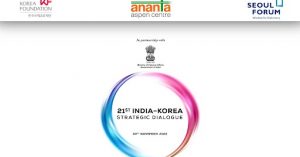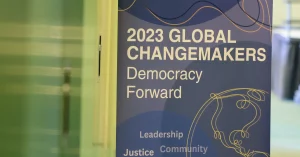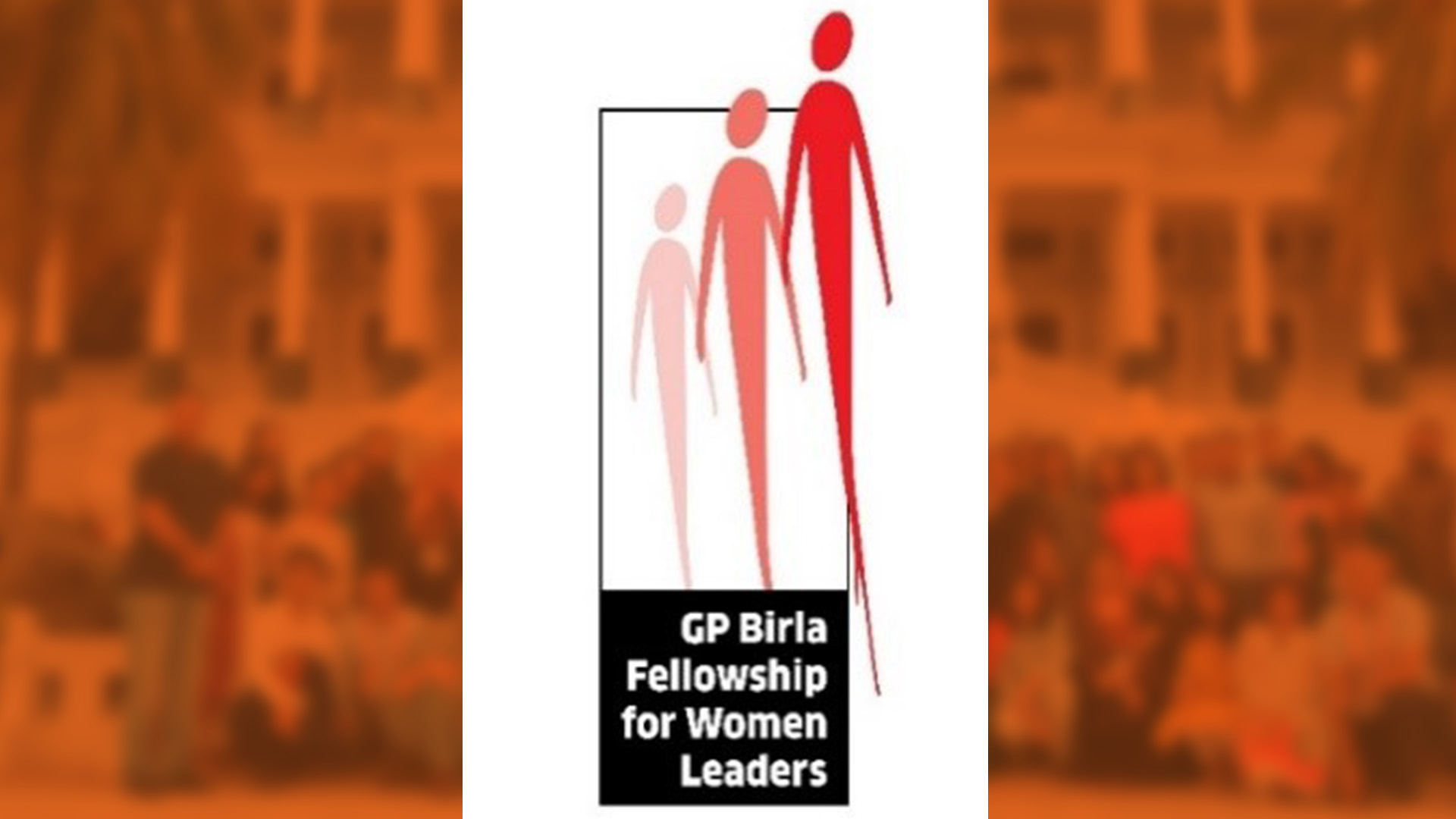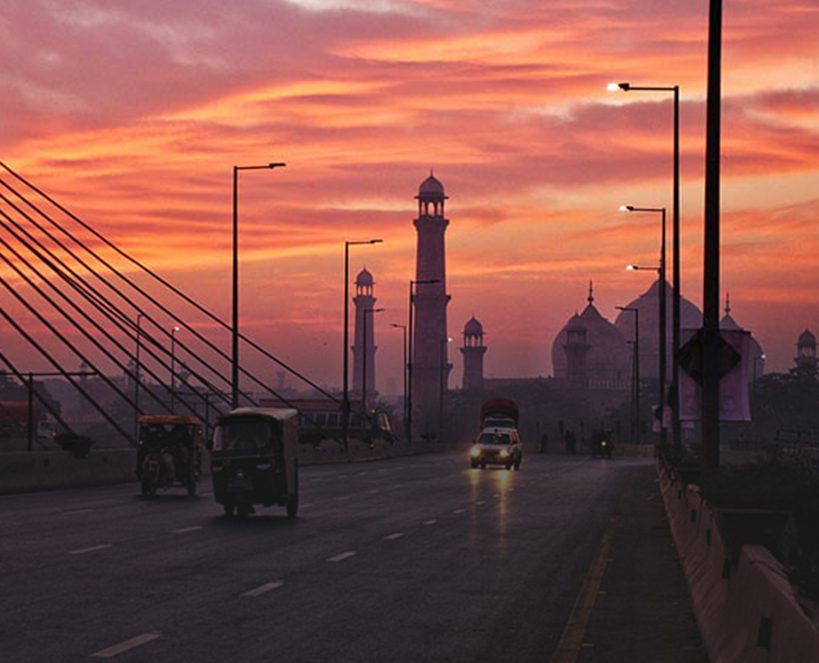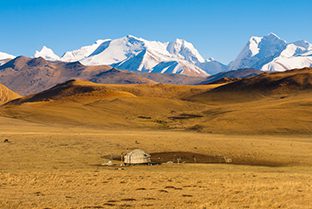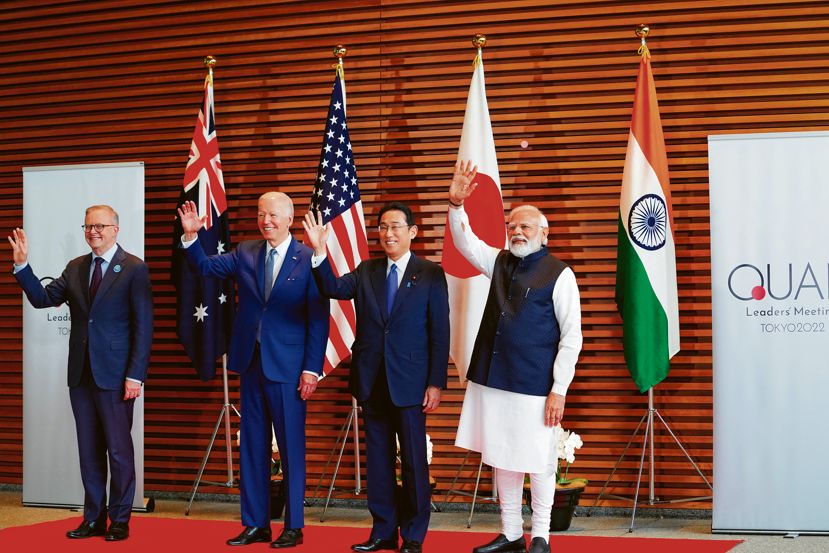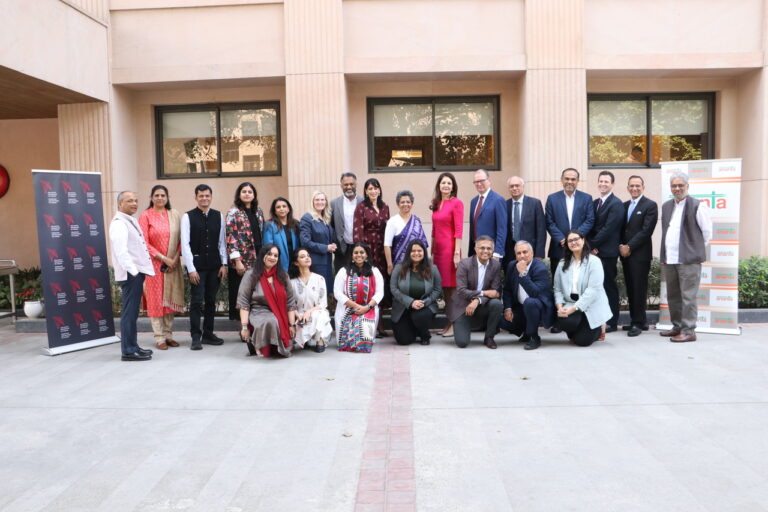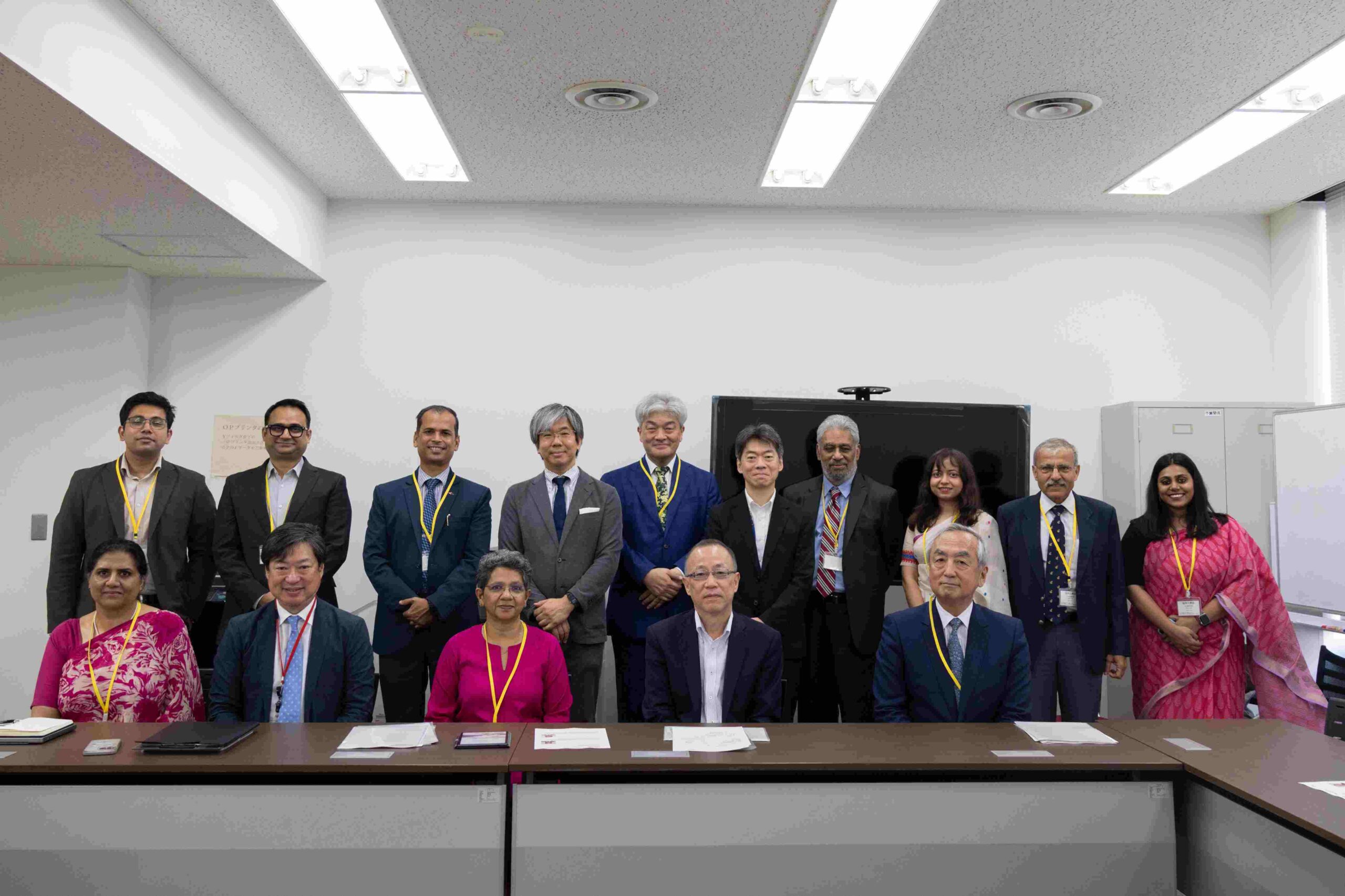ANANTA INSIGHTS
India and Neighbourhood | April-May 2025
Welcome to the April-May edition of Ananta Insights on India and its Neighbourhood, our monthly survey of developments in South Asia. The region has seen fast-moving developments over the past week, the implications of which continue to evolve.
Message to Pakistan: India’s Suspension of the Indus Waters Treaty

Under the Indus Waters Treaty, India got exclusive rights over the Eastern Rivers — Ravi, Beas and Sutlej — while Pakistan got the Western Rivers (Indus, Jhelum and Chenab), with allowances for limited use of their waters by India. Image courtesy: mapsofindia.com
A day after Pakistan-backed terrorists killed 26 innocent civilians in Pahalgam, India announced the suspension of the Indus Waters Treaty (IWT) between the two countries. The IWT, established in 1960 as a framework for the sharing of waters of the Indus river system, has survived many crises, wars and conflicts, and decades of Pakistan-sponsored terrorism against India. On 23 April, India announced that the IWT “will be held in abeyance with immediate effect until Pakistan credibly and irrevocably abjures its support for cross-border terrorism”. Prime Minister Narendra Modi subsequently reiterated India’s position that “blood and water could not flow together”.
The IWT was signed by the leaders of India and Pakistan in Karachi on 19 September 1960, following nine years of negotiations aided by the World Bank. The treaty granted India the “unrestricted use” of the “Eastern Rivers” (Ravi, Beas, and Sutlej), and allocated rights over the “Western Rivers” (Indus, Jhelum, and Chenab) to Pakistan, while permitting some limited uses for India.
The Western Rivers and their tributaries make up approximately 80% of the flow of the Indus system. The IWT permits India limited non-consumptive use of these rivers for purposes like hydropower, navigation, and fish culture, but prohibits significant alterations or storage of their water flows. With the treaty suspended, India is no longer obligated to inform Pakistan about projects related to these rivers, share data, or permit visits by Pakistani inspection officials.
New Delhi had sent notifications to Pakistan in January 2023 and September 2024 seeking a “review and modification” of the IWT. Islamabad did not respond at the time – but it has recently signalled its willingness to discuss the treaty, apparently after India decided to put it on hold following the terrorist attack in Pahalgam.
A lot has changed since the time the IWT was signed – politically, as well as in terms of hydro-geomorphology, population growth, and irrigation patterns in the region. The suspension of the treaty opens the door for India to renegotiate its terms in the context of current realities.
As the upstream nation, India holds the potential to control water flow within the Indus River system, impacting downstream conditions for Pakistan. While India does not currently have the storage capacity to prevent water from flowing into Pakistan, the suspension of the treaty allows it to pursue strategic measures for the management of the waters of the Indus system.
Several projects are already underway to maximize the use of the Western Rivers for hydroelectric power without large reservoirs. Key projects in Jammu and Kashmir include Pakal Dul (1,000 MW), Ratle (850 MW), Kiru (624 MW), and Sawalkot (1,856 MW). Some, like Kishanganga, include limited storage (18.35 MCM), while the Ujh and Ratle projects aim to improve irrigation and power storage (up to 78.71 MCM). The Shahpurkandi Dam in Punjab diverts 1,150 cusecs from the Ravi River, water that previously reached Pakistan. However, these projects have relatively small storage capacity compared to major Eastern dams like Bhakra and Ranjit Sagar.
Conflict to Cooperation: India and Taliban Explore New Ground
On 15 May, External Affairs Minister Dr. S. Jaishankar spoke over the phone with Amir Khan Muttaqi, the Acting Foreign Minister of Afghanistan. In a post on X, the EAM highlighted India’s traditional friendship with the Afghan people and its ongoing support for the development of the country.
This conversation marked India’s first ministerial-level outreach to the Taliban government, which New Delhi is yet to officially recognize. Days earlier, the Taliban had issued a significant statement condemning the 22 April terrorist attack in Pahalgam. On 27 April, India’s Joint Secretary for Pakistan, Afghanistan, and Iran (PAI) Division, M Anand Prakash, met Foreign Minister Muttaqi in Kabul for discussions on strengthening bilateral ties, trade and transit, and “recent regional developments”.
The Taliban Ministry of Foreign Affairs (MoFA) had “strongly condemned” the Pahalgam attack, expressed sympathy for the victims, and asserted that “such incidents undermine efforts to ensure regional security and stability”. This condemnation was particularly noteworthy given the Taliban’s previous affiliations with Pakistan and Pakistan-based terrorist organizations that target India.
As they approach the completion of four years in power in Kabul, the Taliban are seeking international recognition for their regime, which would open the doors for aid and assistance that the country desperately needs. The Taliban’s relationship with Pakistan has deteriorated steadily, with Pakistani aircraft carrying out at least three rounds of air strikes in Afghan territory since 2022, apart from skirmishes between the two sides along their border.
India, which is historically recognised as a friend of the Afghan people and is deeply invested in the country, has followed a policy of cautious engagement with the Taliban. In January, Foreign Secretary Vikram Misri led a delegation to Kabul in what represented the highest level of engagement at the time. The most recent outreach signals New Delhi’s recognition of evolving regional realities, and its willingness to go farther with the Taliban to explore opportunities for mutual cooperation. However, the road ahead is complex and uncertain – as India walks the diplomatic tightrope, a lot will depend on the actions of the Taliban and of the other players in the mix going forward.
India-Nepal Cooperation: Visit of Sudurpaschim Delegation
A high-level delegation from Nepal’s Sudurpaschim Province led by its Chief Minister Kamal Bahadur Shah visited India from 29 April to 5 May. The visit highlighted the deep-rooted and multifaceted relationship between the two countries. The delegation met with Indian officials and visited key institutions with the aim of enhancing bilateral cooperation across various sectors.
During the delegation’s meeting with India’s Minister of State for External Affairs Kirti Vardhan Singh, both parties reaffirmed their commitment to strengthening their unique and longstanding ties, and emphasized the importance of people-to-people connections. The visit aligns with India’s “Neighbourhood First” policy, which prioritizes strengthening relations with neighbouring countries.
The discussions focused on enhancing collaboration in areas such as connectivity, energy, tourism, and agriculture, especially between India and Nepal’s Sudurpaschim region. The delegation visited the Indian Council of Agricultural Research – Indian Agricultural Research Institute (ICAR-IARI) in New Delhi to learn about advances in agricultural research and practices as part of Nepal’s push to adopt innovative techniques to boost its farm productivity. The delegation’s itinerary included visits to Uttarakhand and Uttar Pradesh, which share close cultural and economic ties with Sudurpaschim Province.
Trincomalee Energy Project: A joint India-UAE-Sri Lanka Effort
India, Sri Lanka, and the United Arab Emirates (UAE) signed a tripartite Memorandum of Understanding (MoU) on 5 April to transform Trincomalee, a port city on the eastern coast of Sri Lanka, into a regional energy hub. The agreement was formalized during Prime Minister Modi’s visit to Colombo, during which he held extensive discussions on a range of issues with President Anura Kumara Dissanayake.
Foreign Secretary Misri said the agreement serves as a government-to-government development framework designed to ensure Sri Lanka’s energy security, the provisioning of energy at affordable rates, and to possibly contribute to revenue through export earnings of energy.
The MoU contains plans for infrastructure development, including the construction of a multi-product pipeline and the refurbishment of an oil tank farm. This facility is currently partially operated by Lanka IOC, a subsidiary of the Indian Oil Corporation. The initiative represents the first collaborative energy project in South Asia involving India and the UAE, and underscores growing strategic cooperation in the energy sector.
The framework MoU also identifies public or private entities to implement the business-to-business aspects of the agreement. Representatives from Ceylon Petroleum Corporation, Indian Oil, and UAE-based AD Ports will discuss a detailed business plan. A joint committee has been established to monitor the project’s progress, showcasing the coordinated effort by the three countries to enhance regional energy connectivity and leverage shared economic opportunities.
Bangladesh’s Economy: Struggling Amid Multiple Challenges
Bangladesh continues to struggle with problems in its economy. The government in Dhaka has alleged that approximately $17 billion was misappropriated from major banks under the previous Awami League government, severely undermining liquidity and trust in the financial system. Non-performing loans (NPLs) have surged to an all-time high of BDT 1.82 trillion (approximately USD 15.4 billion), representing 11.1% of total loans as of March 2024.
The interim government led by economist Muhammad Yunus, which took over after mass student-led protests forced Prime Minister Sheikh Hasina from power, faces the formidable challenge of restoring economic stability while navigating a polarized political landscape. The Bangladeshi economy is heavily reliant on garment exports, which accounts for more than 80% of its export earnings. However, in 2025, global demand for garments decreased due to economic slowdowns in key markets like the European Union and the United States. At the same time, remittance inflows declined as Bangladeshi expatriates experienced job losses and wage cuts in the Middle East, and rising import costs driven by a depreciating currency widened the country’s trade deficit. The World Bank has downgraded Bangladesh’s GDP growth forecast for FY25 to 4%, citing significant uncertainties surrounding the political and economic outlook.
Bangladesh’s currency crisis is the result of a combination of structural financial weaknesses, political instability, and external economic pressures. Effectively addressing these challenges will require sustained policy efforts, political stability, and support from international partners.
Further reading:
Pakistan writes to India with an ‘appeal’: Reconsider Indus waters decision – Firstpost
The strategic logic behind India’s ceasefire with Pakistan – The Tribune
Modi govt rejects claims by Trump about US role in brokering India-Pakistan ceasefire
Iran to Invest $5 Billion in Afghanistan’s Iron Ore Sector – Khaama Press
Massoud, Taliban Agree to Not Fight Until Next Round of Talks | TOLOnews
Afghanistan: Humanitarian Access Severity Overview (May 2025) | OCHA
Bangladesh, Japan to hold 6th FOC in Tokyo Thursday | The Daily Star
Nepal at high risk of disasters: Minister Adhikari – The Himalayan Times
Pro-monarchy protesters take out motorcycle rally in Kathmandu
Nepal-China collaboration historic and strong: NC President Deuba – The Himalayan Times
Indo-Pakistan crisis: How not to report a war – Opinion | Daily Mirror
Justice For Wilpattu: A Giant Leap for Flora, Fauna, and Sri Lankans – Ceylon Today
Foreign Policy Decisions Involve Considering the Broader Implications – Ceylon Today
Neighbourhood Series: India–Sri Lanka Ties | Dr. Bhagya Senaratne & Swati Sinha
International contractors to construct Gelephu–Tareythang highway
𝐏𝐫𝐨𝐩𝐨𝐬𝐞𝐝 𝐁𝐚𝐥𝐨𝐨𝐧𝐠–𝐓𝐚𝐤𝐬𝐡𝐚 𝐑𝐨𝐚𝐝 𝐏𝐫𝐨𝐦𝐢𝐬𝐞𝐬 𝐋𝐢𝐟𝐞𝐥𝐢𝐧𝐞 𝐅𝐨𝐫 𝐎𝐯𝐞𝐫 𝟏,𝟎𝟎𝟎 𝐑𝐮𝐫𝐚𝐥 𝐇𝐨𝐮𝐬𝐞𝐡𝐨𝐥𝐝𝐬
48 political appointees in Animal Welfare Ministry | SunOnline International
***






